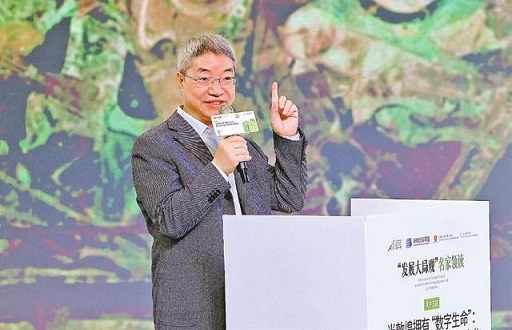Shenzhen
 2024/12/2
2024/12/2
 source: Shenzhen Daily
source: Shenzhen Daily
 Print
Print

Zhao Shengliang, Party chief of the Dunhuang Academy, delivers a lecture at the Shenzhen Book City CBD Store in Futian District yesterday. Courtesy of Shenzhen Publishing Group
Liu Yangyang
524652046@qq.com
ZHAO SHENGLIANG, Party chief of the Dunhuang Academy, the national research institute on Dunhuang art, delivered a lecture on how digital technology empowers traditional culture at the Shenzhen Book City CBD Store in Futian District yesterday.
He discussed the cultural significance of Dunhuang, the history of preserving its cave relics, and applications of digitized artifacts.
“Dunhuang represents the fusion of Eastern and Western art and is a testament to cross-cultural exchange. Digitization is essential because it ensures the permanent preservation of this heritage,” Zhao said. According to him, digitization efforts in Dunhuang began in the late 1980s.
Zhao highlighted various applications of digital technology in Dunhuang’s cultural projects. Recent initiatives include immersive virtual reality productions at the Mogao Grottoes Digital Exhibition Center. These productions allow audiences to explore the caves across different historical periods through virtual tours.
According to Zhao, working with Huawei has greatly improved the visitor experience at Dunhuang. They have introduced an augmented reality map that includes holographic markers, AI-guided tours, and interactive features such as taking photos with a virtual deer.
Dunhuang in Northwest China’s Gansu Province was an important trading center along the ancient Silk Road. From the 4th to the 14th century, it was also an important center for Buddhism, where hundreds of caves were dug with Buddha statues and frescoes made in them. In 1987, these grottoes, known as Mogao Caves, were named a UNESCO World Heritage Site.





